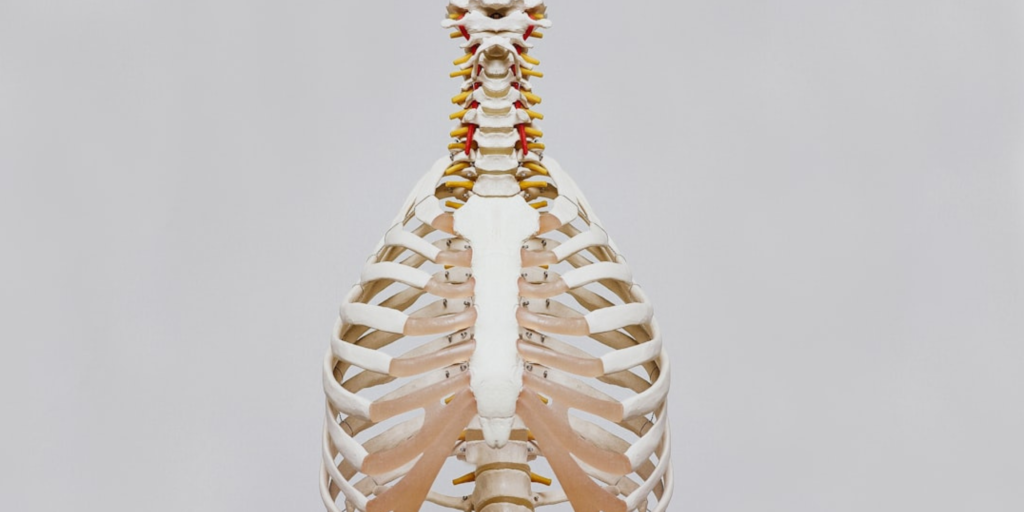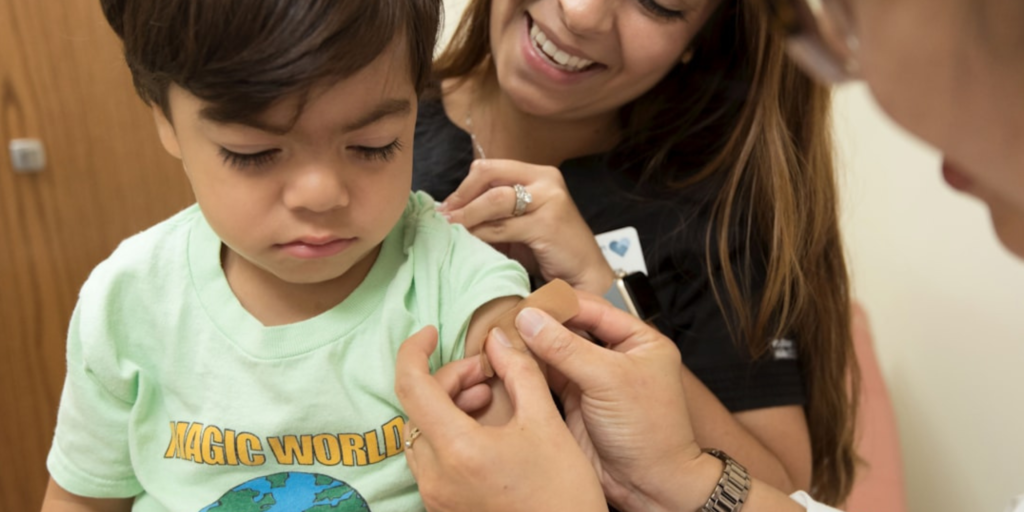Sneak Peak
“Pediatric Scoliosis” Welcome to the world of pediatric scoliosis chiropractic care! This field is dynamic. Five powerful ways stand out. They are key pillars for treating young patients with scoliosis. It includes gentle spinal adjustments and specialized exercises. The aim is to reduce symptoms and promote wellness in children.
We delve into where chiropractic care and pediatric scoliosis intersect. Here, personalized treatment and caring come together to impact young lives. Join us as we explore the new techniques. They base their focus on patients on evidence. These define the special area of chiropractic medicine. Let’s embark on a journey. We’ll learn how chiropractic care for pediatric scoliosis can help children thrive. It can help them embrace a future full of possibilities.
Chiropractic care for pediatric scoliosis.

Scoliosis is a condition characterized by an abnormal lateral curvature of the spine. While it’s affects adolescents, even younger children can develop scoliosis. Chiropractic care is non-invasive and holistic. It helps manage pediatric scoliosis by focusing on spinal adjustments. These adjustments improve alignment and function.
Benefits of Chiropractic Care for Children with Scoliosis
Chiropractic care can help pediatric scoliosis. It can reduce pain, improve posture, and boost spinal health. Fixing spinal misalignments early can slow scoliosis. It can also stop severe spinal issues from forming. Additionally, chiropractic care can improve nerve function. This is crucial for the health and well-being of children.
Chiropractic Techniques for Managing Pediatric Scoliosis
Chiropractors use many techniques to manage pediatric scoliosis. These include spinal adjustments, exercises, and postural training. These techniques aim to fix misaligned spines. They also aim to build supporting muscles and improve range of motion. They promote better spine health and function in children with scoliosis. Moreover, chiropractors may also give nutritional advice and lifestyle tips. These help the health of pediatric patients with scoliosis.
Research on Chiropractic Care Efficacy in Pediatric Scoliosis
We need more research. But, early studies suggest that chiropractic care can help children with scoliosis. Research has shown improvements in pain levels. It also found better spinal alignment. It also found a better life quality in pediatric scoliosis patients. They were getting chiropractic treatment. Also, studies say that chiropractic care can be safe. It can also be an effective add-on treatment for pediatric scoliosis. It works when combined with traditional medical care. We’ve need more research to prove if chiropractic care treats pediatric scoliosis. We also need to study its long-term benefits on spine health. We need to study its benefits on well-being in children.
More Considerations for Chiropractic Care in Pediatric Scoliosis
Besides the mentioned benefits and techniques. It is important to highlight the personalized approach. Chiropractors take this approach when treating pediatric scoliosis. Each child’s condition is unique. They need personalized treatment plans. The plans must consider factors like age, severity of scoliosis, and health. Chiropractors work with kids and their families. They ensure that the treatment fits the child’s needs and goals.
Also, chiropractic care manages symptoms. It also stresses preventing future issues. It supports long-term spinal health in children with scoliosis. Chiropractors aim to promote spinal alignment, mobility, and well-being. They want to help children lead active, healthy lives. They also want to help them manage their scoliosis.
You May Also Like:
Chiropractic Care for Infants: 7 Powerful Ways
Traditional Treatments vs. Chiropractic Care

When making healthcare decisions, people often choose between traditional medicine and other therapies. These include chiropractic care. Understanding the nuances and benefits of each approach is crucial. It’s helpful for making informed choices that align with personal health goals.
Comparison of Traditional Treatments and Chiropractic Care
Conventional medicine is the foundation of traditional treatments. They involve using drugs, surgeries, or other standard ways. Individuals use them to address health issues. In contrast, chiropractic care emphasizes non-invasive techniques. These include spinal adjustments, manual therapies, and lifestyle changes. They aim to improve health. Traditional treatments target symptoms. Chiropractic care aims to address the root cause. It’s an approach that promotes long-term healing and wellness.
Advantages of Chiropractic Care for Pediatric Patients
Chiropractic care offers many benefits for kids. It does more than treat physical problems. Chiropractic adjustments promote musculoskeletal health. They also improve sleep, boost the immune system, and improve children’s health. Traditional treatments may have side effects from medications. Chiropractic care is a safe and natural alternative for pediatric healthcare.
Patient Satisfaction and Outcomes
Research shows that patients are often very satisfied with chiropractic care. This is because it’s patient-centered and focuses on individualized treatment plans. Chiropractors consider the whole person, not isolated symptoms. This lets them tailor care to meet each patient’s unique needs. Chiropractic care has many benefits. It reduces pain and boosts mobility. It also improves life quality for many people.
Integration of traditional and alternative therapies.
In some cases, traditional medicine and chiropractic care can work together. They may offer the best approach to health and wellness. Healthcare providers can collaborate. They will use each discipline’s strengths. This will give patients a holistic, personalized treatment plan. It integrates evidence-based practices from traditional and alternative medicine. This gives people many therapy options to support their well-being.
The choice is between traditional treatments and chiropractic care. It depends on individual preferences, health needs, and treatment goals. By exploring each approach’s benefits. And by consulting with healthcare professionals. Individuals can make informed decisions. The decisions will match their values. They will also promote their best health and wellness.
Pediatric Scoliosis: A Comprehensive Approach

Pediatric scoliosis is a condition where a child’s spine curves sideways. It poses unique challenges. They need a comprehensive, multidisciplinary approach for effective management. The care model for pediatric scoliosis patients is collaborative. It involves a coordinated effort among various healthcare professionals. These include orthopedic surgeons, physical therapists, pediatricians, and occupational therapists. This team-based approach ensures that it addresses the diverse needs of young patients. It does so. It covers the condition’s physical aspects. It also covers the child’s emotions and social well-being.
Role of Parents
Parents are key members of the treatment team. They play a big role in caring for children with scoliosis. Parents provide physical care. They also advocate for their children. They teach and support them during treatment. Parents contribute to their child’s well-being and treatment. They do this by talking with healthcare providers. They also stay informed about treatment options. They also do this by fostering a positive home environment.
Psychological Support
Besides medical treatments, we’ve now seen that psychological support is essential. It’s part of the holistic care of pediatric scoliosis. Psychologists or social workers can help. They can help children and families cope with the emotions from the condition. They can also address any mental health issues and improve resilience and coping.
Technological Innovations
Also, we’ve used advanced technologies. These include 3D-printed braces and computer-assisted surgical planning. They’ve revolutionized the treatment of pediatric scoliosis. These innovations enable more precise and personalized interventions. They lead to better outcomes and shorter treatment times for young patients.
Monitoring and follow-up.
Regular monitoring and follow-up appointments remain crucial components of pediatric scoliosis care. These visits allow for ongoing assessment of the spine’s curve. They also allow for evaluation of treatment and early detection of complications. Providers can tailor treatment plans to fit each child’s changing needs. They can do this by being proactive. They do this by monitoring. This also improves long-term outcomes.
Chiropractic Interventions and Techniques

Chiropractic care is a holistic approach to health. It focuses on the body’s structure, especially the spine, and its functioning. For children with scoliosis, chiropractic adjustments are key. They’ve helped a lot in managing the condition. These adjustments are gentle. They manipulate the spine to improve alignment and reduce the curve of scoliosis.
Customized treatment plans for children are essential in chiropractic care. Each child is unique, and their treatment should reflect that. Chiropractors work with kids. They’ve created plans for each child’s needs and worries.
Innovative approaches like the Scoliosis Boot Camp have gained popularity in recent years. This program is intensive. It combines chiropractic adjustments, exercises, and other therapies. It helps children with scoliosis improve their spinal alignment and quality of life. By using these new techniques, chiropractors can offer complete care. It goes beyond traditional methods.
Chiropractic adjustments treat pediatric scoliosis. They involve gentle, specific manipulations. The aim is to fix spinal misalignments and improve spinal health. These changes are safe for children. They can help reduce scoliosis progression, ease pain, and boost mobility.
Also, to adjustments, chiropractors may recommend specific exercises. These exercises target the muscles that support the spine to strengthen them. These exercises can improve posture. They can also enhance flexibility and promote better spinal alignment over time.
Also, chiropractors may use other techniques. For instance, spinal decompression therapy relieves pressure on the spine and discs. This promotes healing and reduces scoliosis pain.
Parents must understand that chiropractic care for pediatric scoliosis is a team effort. Chiropractors work with pediatricians and orthopedic specialists. They also work with other healthcare providers. They do this to ensure thorough care and the best results for the child.
Chiropractic interventions offer a holistic and effective approach to managing pediatric scoliosis. Chiropractors can help children with scoliosis. They do this by using gentle adjustments and personalized treatment plans. They also use innovative techniques, such as the Scoliosis Boot Camp. They work with others in collaborative care.
Chiropractic care also emphasizes the importance of patient education and empowerment. Chiropractors teach children and their parents. They teach about lifestyle changes, ergonomic adjustments, and self-care. These practices can support spinal health and well-being. Chiropractors empower patients with knowledge and tools. This helps patients take control of their health. It’s a promotion of long-term wellness and preventive care.
Moreover, chiropractic care for pediatric scoliosis extends beyond physical adjustments. Chiropractors also focus on the feelings and minds of young patients. They provide a supportive and nurturing environment. This environment fosters confidence and resilience.
Research is exploring the benefits of chiropractic care for pediatric scoliosis. Studies show that spinal adjustments help with pain, function, and quality of life. They help kids with scoliosis. Chiropractic medicine is evolving. New techniques and technology emerge to help kids with spine issues.
Chiropractic care offers many techniques. They take a comprehensive and patient-centered approach to managing pediatric scoliosis. Chiropractors can make a big difference for children with scoliosis. They do this using traditional adjustments. They also use innovative programs like the Scoliosis Boot Camp. They also work with other healthcare providers to provide collaborative care. This helps to promote the health, mobility, and well-being of children with scoliosis.
Case Studies and Success Stories

In this section, we will look at real-life cases. They are of pediatric scoliosis treated with chiropractic care. We will use patient testimonials and long-term outcomes. They’ll help us understand how chiropractic care affects people’s quality of life. These case studies and success stories aim to show the benefits of chiropractic care. It’s helpful in managing scoliosis and improving well-being.
Pediatric scoliosis is a condition. It affects the curve of children’s spines. It can lead to discomfort, pain, and even breathing difficulties if left untreated. Chiropractic care offers a non-invasive and holistic approach to treating scoliosis in children. Chiropractors focus on spinal adjustments, exercises, and lifestyle changes. They aim to fix the spinal curve and improve spine function.
One compelling case study involves a 10-year-old child diagnosed with scoliosis. Traditional medical approaches suggested surgery, but the parents opted for chiropractic care. Over six months, the child received regular chiropractic adjustments and did exercises. Their spine improved a lot. They also reported less pain. Long-term follow-ups showed that the child’s spine continued to improve. The doctor eliminated the need for surgery.
Patient testimonials show more. They highlight the good impact of chiropractic care on life quality. Many people thank it’s for the pain relief, better movement, and improved well-being. They got these after having chiropractic treatment for scoliosis. These success stories show that chiropractic care works. It doesn’t manage scoliosis symptoms. It also boosts health and vitality.
Recent studies show that this too. They show that chiropractic care can treat the physical symptoms of scoliosis. It’s also helps mental health. Chiropractic care takes a holistic approach. It considers the mind-body connection. Researchers have found that this approach reduces stress in pediatric scoliosis patients. It leads to better emotional health and resilience.
Besides giving spinal adjustments, chiropractors also give nutritional advice and ergonomic tips. These help support the health of children with scoliosis. Chiropractic practitioners promote a healthy lifestyle and give personalized care plans. They empower young patients to take an active role in their well-being.
Looking ahead, new technologies are changing chiropractic care for pediatric scoliosis. These include digital imaging and computer-assisted adjustments. They’re revolutionizing the field. These innovations allow for better treatment planning and monitoring. They ensure the best outcomes for young patients.
Real-life cases and patient testimonials provide the evidence. They show the importance of chiropractic care for treating pediatric scoliosis. Chiropractors address the root cause of scoliosis. They promote spinal health. They play a crucial role in improving the lives of children with scoliosis. This is because of ongoing research and advances in chiropractic. The future looks bright for those seeking non-surgical scoliosis treatments.
Educating parents and patients.

Scoliosis is a condition characterized by an abnormal lateral curvature of the spine. It can be a source of concern for both parents and patients, especially when first diagnosed. Educating parents about scoliosis is crucial. It empowers them to join in their child’s treatment. Healthcare providers can ease fears and uncertainties. They do this by giving parents information about the condition. This info includes its prevalence, likely causes, and the types of scoliosis.
Educating patients on scoliosis management is vital. It ensures successful treatment. Patients need to know the importance of finding problems early. They do this through regular screenings. They also need to know the benefits of early treatment. Patients can use the knowledge to make informed decisions about their care. The options include physical therapy, bracing, and sometimes, surgery.
Besides traditional medicine, other therapies can also help. For example, chiropractic care can help manage scoliosis. We’ve got to address common misconceptions about chiropractic. This will help parents and patients make informed choices. Healthcare providers can educate them about the evidence-based benefits of chiropractic adjustments. They improve spinal alignment and reduce discomfort. This education can promote a holistic approach to scoliosis management.
Also, fostering open communication between healthcare providers, parents, and patients is key. It ensures a team approach to scoliosis care. Encouraging questions helps. Providing resources for further reading helps. Offering support groups helps too. These things can create a supportive environment for families. They’re navigating the challenges of scoliosis.
Giving parents and patients knowledge about scoliosis enhances their understanding of the condition. It also equips them to take part in treatment. By promoting education and collaboration, healthcare providers can work with families. They can improve treatment outcomes. They can better the lives of people with scoliosis.
When it comes to scoliosis management, early intervention is crucial. Finding and treating the curve early can stop it from getting worse. It can also reduce possible problems. It’s essential to track the spine’s alignment and growth often. This is especially true during periods of rapid growth, like adolescence.
Parents and patients must understand that scoliosis is complex. It requires a team approach. You will collaborate with a team of healthcare professionals. This team includes orthopedic specialists, physical therapists, and chiropractors. They can provide tailored care that meets your needs.
Also, promoting a healthy lifestyle helps. It includes regular exercise, proper nutrition, and good posture. This can help medical treatments and spinal health. Encouraging patients to stay active. They should engage in activities that strengthen the core. This can help improve posture and reduce the risk of progression.
Educating parents and patients about scoliosis is essential. It empowers them to make informed treatment choices. They can take an active part in their care. By creating a supportive and collaborative environment, healthcare providers can work with families. They can work together to get the best treatment outcomes. This will improve the lives of people with scoliosis.
Conclusion:
Chiropractic care for pediatric scoliosis takes a holistic approach. It addresses spinal issues in children. Chiropractors focus on gentle adjustments and personalized treatment plans. They can help improve spinal alignment and well-being in young patients. Chiropractic care and traditional medicine are alternatives. They can support children with scoliosis. To explore more holistic therapies and meditation practices like loving-kindness meditation, visit. relevant_url . Start your journey towards natural wellness and holistic healing today!









